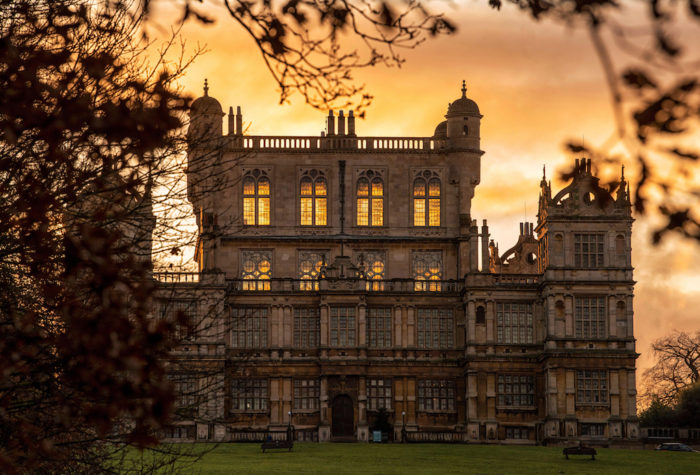Bright days and dark knights: Wollaton Hall, Nottingham
When flooded with sunlight, Nottingham’s Wollaton Hall is a heavenly jewellery box of delights. Yet the Batman-approved façade hides many historic secrets, says Natalie Marchant
With its limestone turrets and traceried windows glittering in the sun, Wollaton Hall looks like an ornate jewellery box perched incongruously on a hill. And like all precious jewellery boxes, treasures lie within its hidden compartments. Indeed, this Nottingham country house was so opulent, that a visiting Queen Adelaide, wife of King William IV, later said it should have a glass case to protect it from the elements.
Wollaton Hall is one of Britain’s finest grade I-listed Elizabethan buildings. It was built between 1580 and 1588 for landowner and industrialist Sir Francis Willoughby, who wanted a sumptuous residence in which he hoped the then monarch, Queen Elizabeth I, would stay. To show off his wealth and prestige, he engaged architect and surveyor Robert Smythson, who had already completed Longleat in Wiltshire and went on to create Derbyshire’s Hardwick Hall.
The result was one of Britain’s most eye-catching examples of English Renaissance architecture. But its construction was marred by tragedy for Sir Francis, who never lived here. He died just eight years after its completion, without a male heir and vast amounts of debt thanks to the cost of the build. Neither did Elizabeth I ever visit to see it in all its glory.
What a sight Her Majesty missed. The exuberant frontage that you see today stands as testament to his original vision, even if the interior has undergone redesigns over the years. The hall’s four corner towers and soaring top-floor Prospect Room – with the sun shining right through it, creating the illusion of a floating glasshouse, more of which later – are visible for miles.
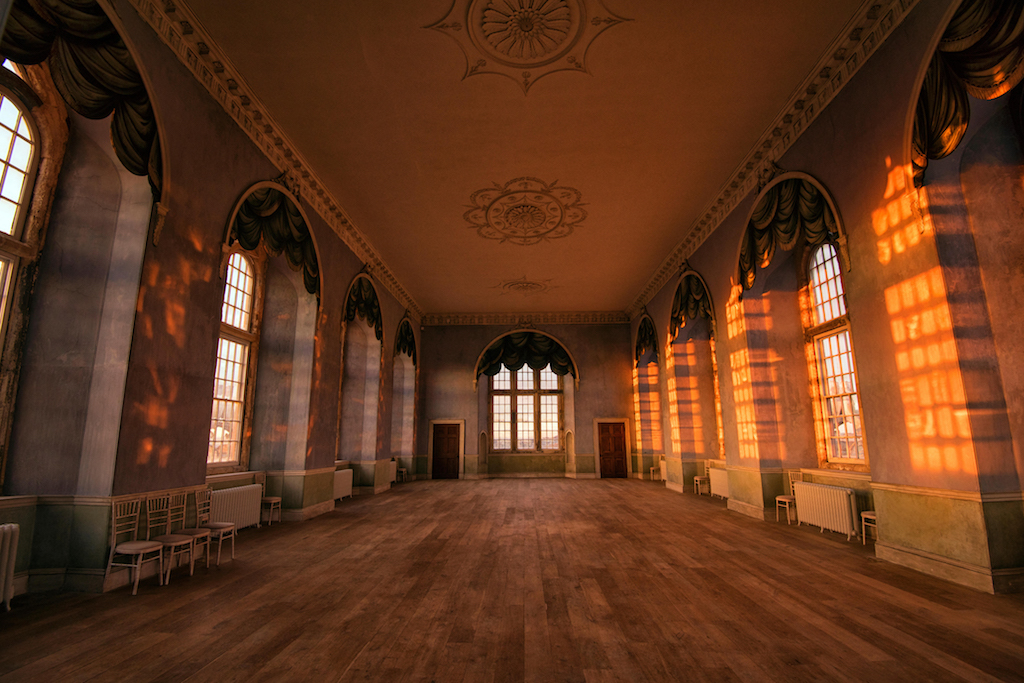
Move closer and you’ll see dozens of busts of historical figures, including Plato, Caesar and Charles I, the latter of whom once stayed here with his mother while he was the Duke of York, incorporated into the elaborate façade. Meanwhile some rather bizarre gondola mooring rings attached to the wall hint at an Italian influence.
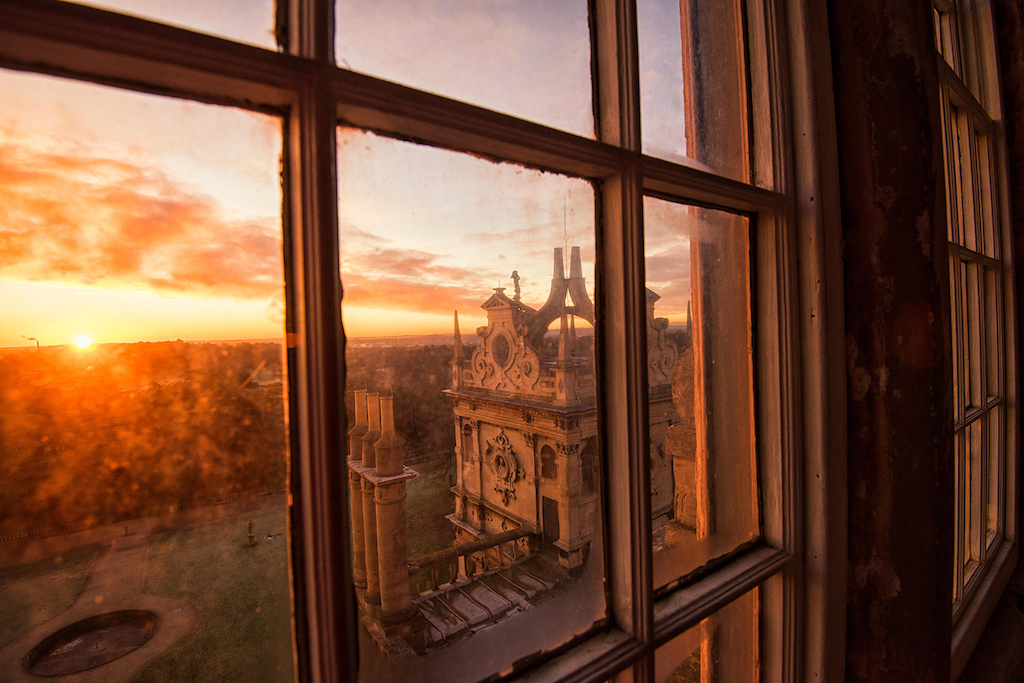
Film buffs may recognise Wollaton Hall from Christopher Nolan’s 2012 film The Dark Knight Rises, in which the distinctive exterior featured as Wayne Manor, the home of Batman’s alter ego Bruce Wayne. The setting was surprisingly appropriate – the grounds are home to nine species of bat, while the nearby village of Gotham indirectly inspired the naming of the fictional Gotham City (in medieval times, the Nottinghamshire villagers had a reputation for being fools, leading to one satirical magazine borrowing “Gotham” as a nickname for New York in the 19th century, which in turn was picked up by DC Comics).
Wollaton Hall’s interior is a somewhat muddled affair. While some of the original Tudor features remain, much of what you see now is Georgian thanks to alterations made by successive generations of Willoughbys. In 1642, a fire at the east end of the building saw Wollaton Hall abandoned for 44 years. The subsequent renovations were carried out under Cassandra Willoughby, Duchess of Chandos, who became mistress of the hall when her brother inherited it. Cassandra led both the restoration efforts and catalogued the family archives, along with the botanical and zoological collections of her renowned naturalist father.
In 1925, the family sold the hall to Nottingham Corporation for £200,000 and a year later it opened as the city’s Natural History Museum, which it remains to this day – a move that would no doubt have pleased the Duchess. So, on the ground floor alone, you can visit the Elizabethan Great Hall, admire the Georgian-style Salon and explore cabinets full of taxidermy curiosities.
The jewel of the lower part of the house is the Great Hall, with its soaring false hammerbeam roof, complete with shields and tracery – the traditional heart of the Elizabethan home. At one end stands an elaborate stone screen with two doorways, designed by Smythson and carved by Thomas Accres, and the same lion-head gondola rings as outside. On the gallery level above is a 17th-century organ, topped with a golden heraldic owl, which was played by composer Georg Friedrich Händel during one of his visits.
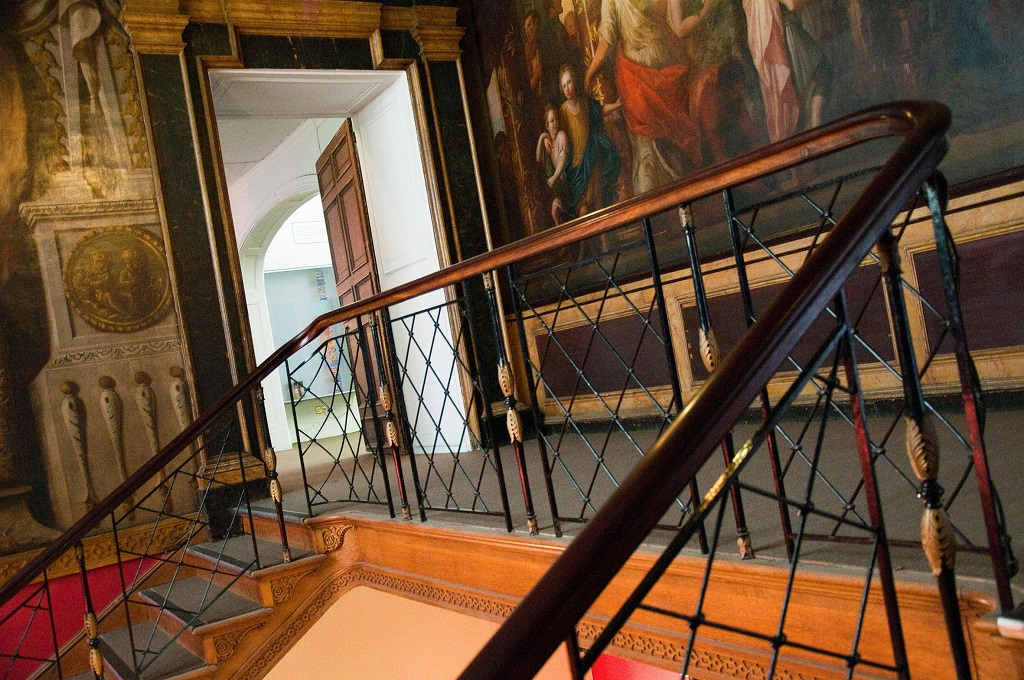
Opposite the current entrance stands a 16th-century fireplace with the Willoughby coat of arms above it; closer inspection reveals iron tubes forming part of a Georgian attempt at central heating. Look up and you’ll see one of two displays of Brown Bess flintlock muskets, which were issued to the Loyal Wollaton, Lenton and Beeston Volunteer Infantry by their commander Henry Willoughby, the 6th Baron Middleton, in around 1803. At the time, the Napoleonic Wars with France were beginning to rage and there were fears of invasion.
These concerns didn’t come to pass but the guns were eventually used during the Reform Bill riots of 1831, when
a mob trying to attack the estate were repulsed by Lord Middleton and his troop of yeomanry. His concerns of the property being breached can still be seen around the house, with hefty metal security gates in the servants’ quarters and heavy iron shutters on the Salon’s French windows.
On either side of the hall are two grand staircases. The North Stairwell has early 18th-century walls and ceiling featuring the story of Prometheus by Sir James Thornhill and adapted by Louis Laguerre. Look closely and you’ll see additional, not to mention ghostly, faces have been painted on, then seemingly later painted out again. Meanwhile the South Stairwell’s ceiling features the creation of Pandora, also by Thornhill. Elaborate carved door cases on each feature an undeniable similarity to the work of Grinling Gibbons.
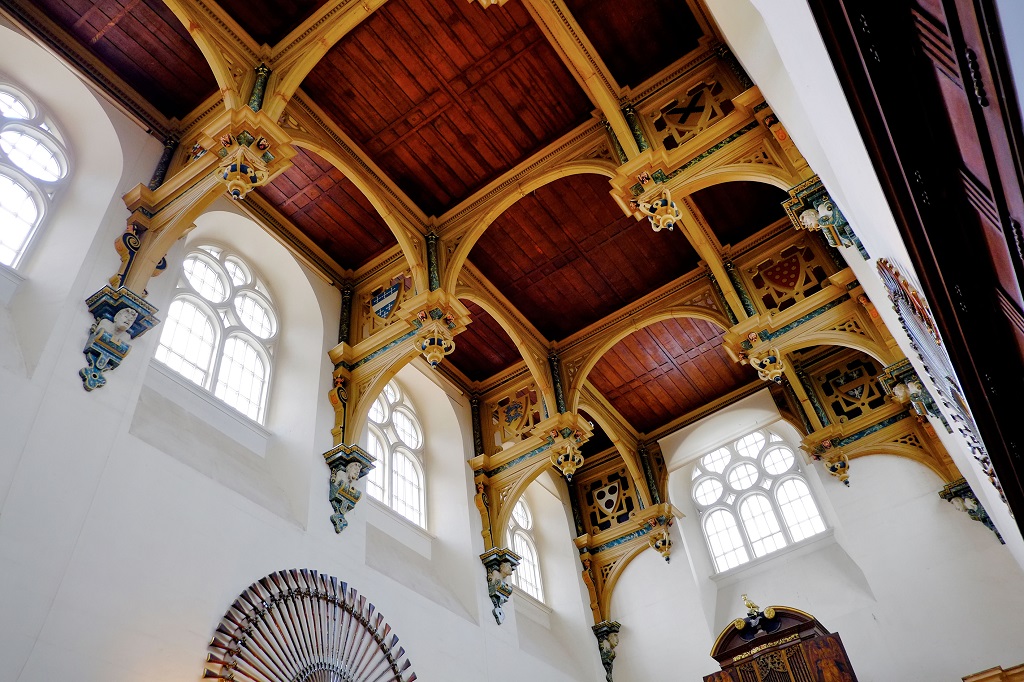
But the other gem in the jewellery box that is Wollaton Hall is the Prospect Room, perched atop the Grand Hall. Its original intended use remains unclear although it almost certainly wouldn’t have been used by women, who’d struggle to get their fashionably wide dresses up the narrow winding staircase. Instead they would have to settle for perambulating on the lead roof, where they could shelter from inclement weather in one of the four turrets.
Decorated in the blue of the sky and the green of the land and surrounded by glass, the Prospect Room is positively heavenly. Its Regency decoration, with an illusion of perfect symmetry, was one of various refurbishments carried out by architect Sir Jeffry Wyatville in the early 1800s, at the request of Sir Henry Willoughby. Nowadays it has found
its purpose in hosting weddings and other events, with stunning views over the city.
Another of Wyatville’s most distinctive marks on the property is the grade II-listed Camellia House in the hall’s grounds. The oldest cast-iron glasshouse in Europe, it was designed to catch rainwater and funnel it to the plants inside. The one problem being that camellias prefer more temperate climates than a hothouse, although there are some still here. Back inside, where many of the family’s former rooms are now museum exhibition rooms, storage facilities and offices, Wollaton Hall’s remaining curiosities tend to be hidden out of sight. An extension added in 1823 contains a line of servants’ bells, while the recreated Tudor kitchens tell the tale of how an Elizabethan home was
run below stairs.
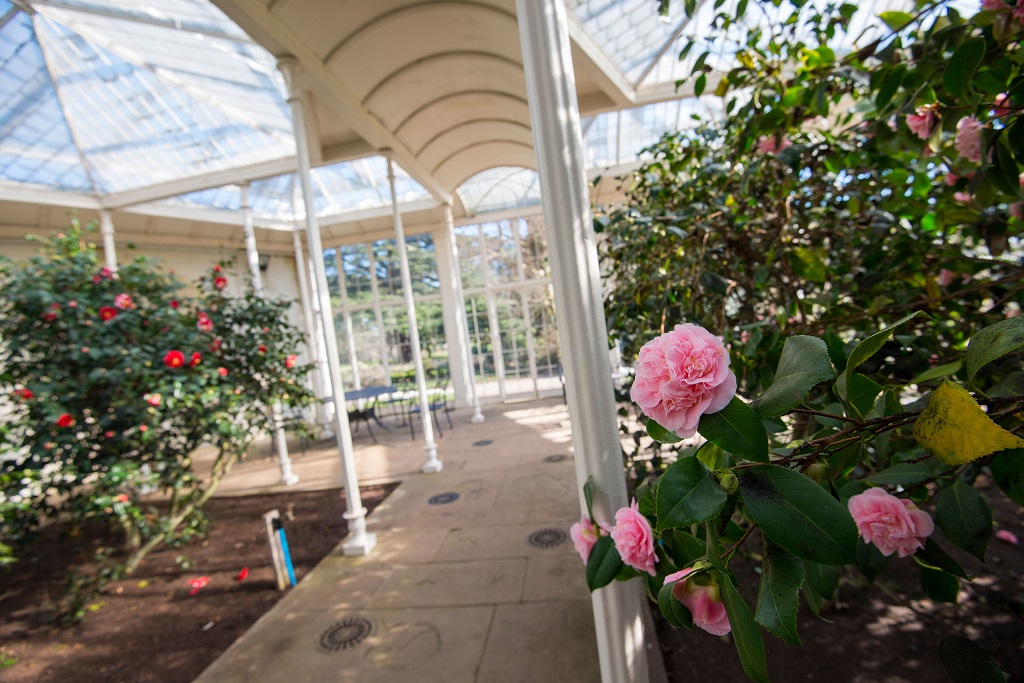
But two of Wollaton Hall’s most surprising curiosities are tucked away even further in its deepest recesses. Subterranean tunnels used as a wine cellar are also home to a freshwater spring and reservoir known as the Admiral’s Bath – so named after Admiral Sir Nesbit Josiah Willoughby, who allegedly used to cleanse himself in its ice-cold water as a hangover from his naval days. These, along with the kitchens, can only be accessed on occasional tours of the house.
However, the most unusual secret is completely out of public view; indeed that is very much the point. Behind the screen of the Great Hall is a room called the Lord Middleton Suite, where Sir Henry had hidden bolts installed on the doors after the uncertainty of the Napoleonic Wars. Go through to the back, move a desk, pull up a carpet, lift up a floor panel and you’ll find a trapdoor to the Muniment Room – a bunker-like space where the family’s papers were kept.
For decades, generations of Nottingham children have gone to Wollaton Hall to admire its natural history collection, including the 19th-century taxidermied George the Gorilla. Others have visited to walk in its beautiful formal gardens and deer park, whose animals were bequeathed to the city along with the house. One can only wonder how many actually knew of all the hidden treasures behind its doors.
Read more:

